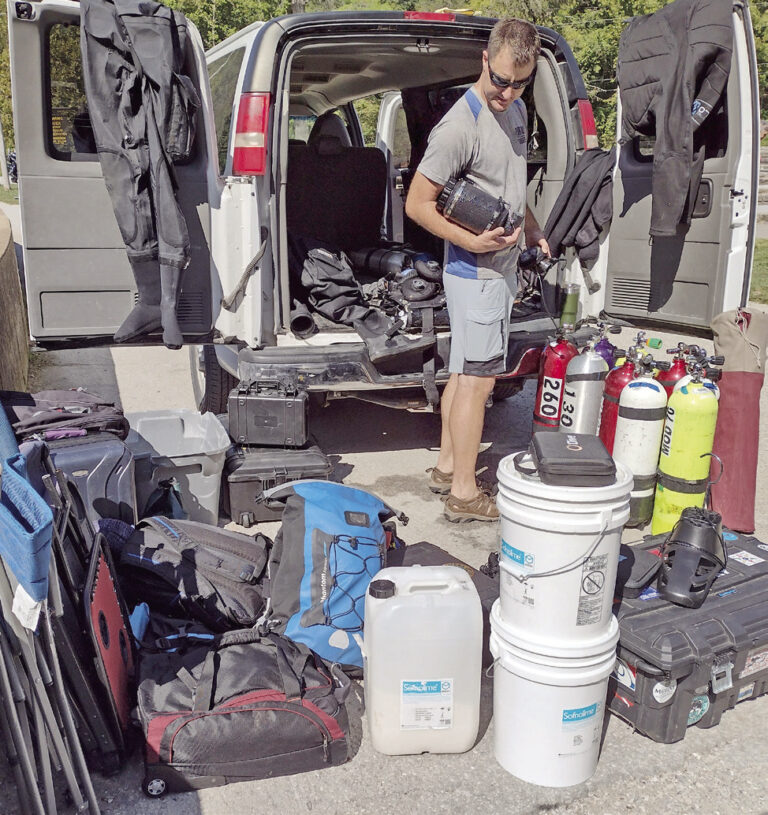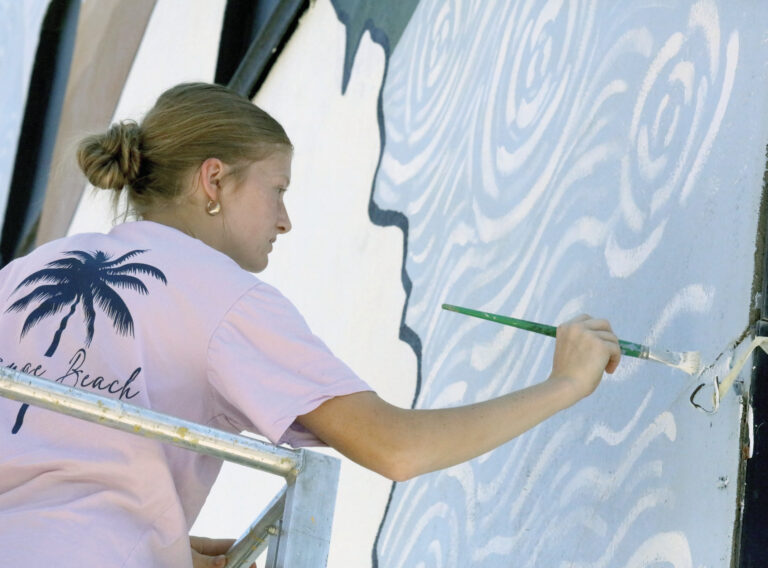The best laid plans

The KISS Rebreathers dive team arrived at Roaring River Spring on Sept. 16 with the goal of diving to a 500-foot depth inside Roaring River spring the following morning before the Meet the Divers event scheduled for that afternoon.
If successful, not only would they exceed their past depth-record of 472 feet – set in November 2021 – but they would be able to break the news, first-hand, to the people assembled for the event later that day.
In preparation for the dive, 18 safety tanks containing gases mixed for depths ranging from 20-620 feet were staged at intervals along the upper 250 feet of their planned underwater pathway. So the divers could enjoy Facebook and streaming movies during the expected long periods of required decompression, diver/cartographer Jon Lillestolen routed wi-fi from the surface of the spring into the underwater habitats where the divers serve deco time.
So that divers could enjoy balmier water temperatures while they decompressed, water was siphoned from the spring, passed through a portable heater, then piped by hose into the divers’ underwater habitats.
Plans were in place for a projected six-hour dive. Mother Nature, however, planned otherwise.
The dive was cut short when divers Mike Young, Lillestolen and Randall Purdy reached a depth of 260 feet subsurface, and the clear water in which they’d been diving abruptly gave way to murk.
“We couldn’t see more than six inches in front of our mask,” Purdy said.
The team forged downward, hoping the water would clear, but it didn’t. With safety as their priority, the trio aborted their mission at a depth of 350 feet and began reascending.
Young said he was baffled by the murky water, at depth, when the surface water was clear.
Later in the afternoon, he received an answer to the conundrum. An audience member at the Meet the Divers event asked Young if he was aware of the 2.3 magnitude earthquake that had occurred the previous week in Horseshoe Bend, Arkansas, located 175 miles away from Roaring River State Park.
“Could that cause the silty water?” The audience member asked.
“It certainly could,” Young replied.
According to Young, a shift along a fault line can cause underground repercussions hundreds of miles away. He cited the notorious example of Devil’s Hole, in the state of Nevada, where a four-foot undulation in its water pool was observed after a 7.4 magnitude earthquake in Oaxaca, Mexico, some 2,000 miles away.
Young theorized that tremors from the Horseshoe Bend area may have caused rocks to fall inside the Roaring River cave system, which in turn stirred up the vision-obscuring silt. Although the aborted mission was a bit of an anti-climax, safety is more important than setting new records, every time, Young said. Young hopes that by the time of the team’s October visit the water will be clear and conditions favorable for another attempt by the team to descend beyond 472 feet.


